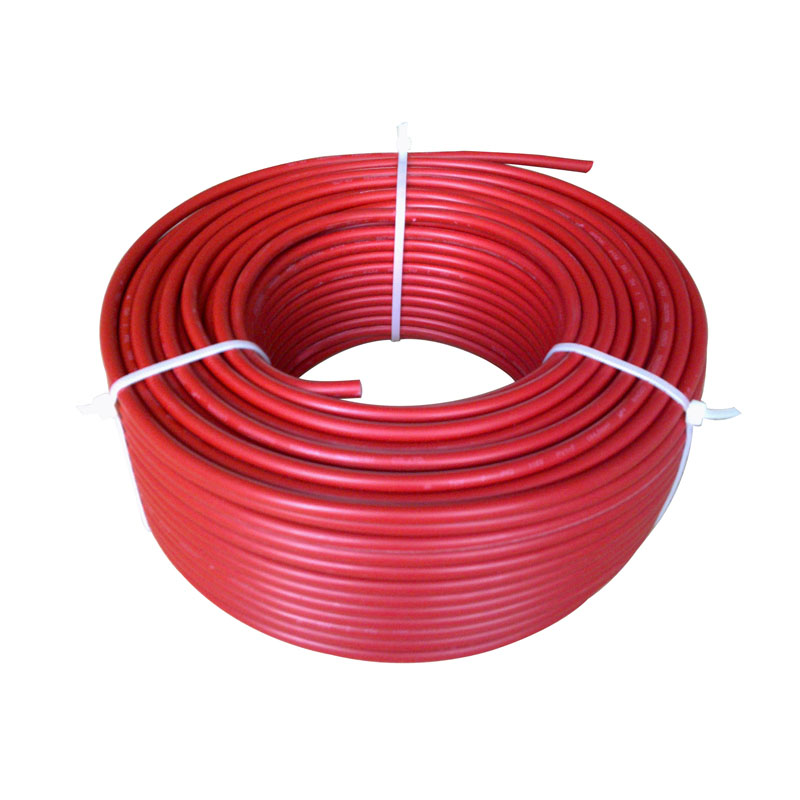Why Is PV Cable Essential for Solar Power Systems?
2025-01-07
As the world moves toward cleaner, more sustainable energy sources, solar power continues to gain popularity as one of the most reliable alternatives to traditional fossil fuels. Whether it's powering homes, businesses, or large-scale solar farms, the efficiency and reliability of solar systems depend on several key components. One of the most vital yet often overlooked parts of any solar power system is the PV cable. But why is PV cable so essential for solar power systems? In this blog, we’ll dive into the importance of PV cables, their role in solar energy production, and why choosing the right cable can make all the difference.
What is PV Cable?
PV cable, short for Photovoltaic Cable, is a type of electrical cable specially designed for solar power systems. These cables are responsible for carrying the electrical current generated by solar panels to the inverter, battery, and other components of a solar power system. PV cables are different from standard electrical cables because they are built to withstand the specific environmental conditions that come with solar power installations, such as exposure to sunlight, temperature fluctuations, moisture, and mechanical stress.
Typically, PV cables consist of copper conductors, which provide excellent conductivity, and they are insulated with materials that are resistant to UV radiation, heat, and weathering. The cables are usually classified by their voltage rating, current-carrying capacity, and durability to ensure they meet the specific needs of solar energy systems.
Why Are PV Cables Important in Solar Power Systems?
1. Efficient Transmission of Power:
PV cables are designed to efficiently transfer the electrical energy generated by solar panels to other parts of the system, such as inverters and batteries. A high-quality PV cable minimizes power loss during transmission, which is critical for maximizing the overall efficiency of the solar system. Poorly selected or low-quality cables can lead to energy losses, which can reduce the system’s overall performance.
2. Durability and Longevity:
Solar power systems are often installed in outdoor environments where they are exposed to extreme weather conditions, including intense sunlight, rain, wind, and temperature fluctuations. PV cables are specifically engineered to handle these harsh conditions. They are made from durable materials that resist UV degradation, moisture, and physical wear and tear, ensuring that they maintain their integrity over time. This durability is crucial for the longevity of the solar power system, reducing the need for frequent repairs or replacements.
3. Safety and Reliability:
As with any electrical system, safety is a top priority in solar power installations. PV cables must meet strict safety standards to prevent electrical hazards such as short circuits, overheating, or fires. They are designed with high-quality insulation that helps prevent electrical faults, ensuring that the solar power system operates safely and reliably. Properly installed PV cables also help in preventing the risk of electrical shock to maintenance personnel.
4. UV Resistance and Weatherproofing:
Unlike conventional cables, PV cables are engineered to withstand prolonged exposure to the sun’s UV rays without degrading. UV radiation can weaken and deteriorate standard cables, leading to insulation breakdown and potential failures. PV cables are made with materials such as cross-linked polyethylene (XLPE) and thermoplastic elastomer (TPE) that provide UV resistance, ensuring the cable can handle extended exposure to sunlight without losing its insulating properties.
5. Flexible and Easy to Install:
PV cables are designed to be flexible, making them easier to install in a variety of environments. Whether the solar system is set up on a rooftop, in a field, or in a remote location, the flexibility of PV cables allows for efficient routing through tight spaces and around corners. This ease of installation reduces labor costs and time, making the overall installation process more efficient.
6. Energy Efficiency and Performance:
The efficiency of a solar power system is heavily reliant on the quality of the components used, and PV cables are no exception. High-quality cables ensure that the electrical current flows with minimal resistance, optimizing the performance of the system. By choosing the right cables, you can help ensure that the solar power system is running at its full potential, producing as much energy as possible and providing the maximum return on investment.
7. Compliance with Industry Standards:
PV cables are built to comply with international standards, such as those set by the International Electrotechnical Commission (IEC) and Underwriters Laboratories (UL). These standards ensure that the cables meet safety and performance requirements specific to solar installations. Compliance with these standards provides peace of mind, knowing that the cables are reliable and will perform as expected.
Types of PV Cables
There are several types of PV cables available, each with specific features suited to different applications. The two most common types of PV cables are:
1. Solar Power Cable (PVC):
This is a basic type of cable often used in residential solar installations. It typically features a durable PVC (Polyvinyl Chloride) jacket and is designed for use in both outdoor and indoor environments. While PVC cables are cost-effective, they may not be as resistant to extreme temperatures or UV exposure as other types of cables.
2. XLPE (Cross-Linked Polyethylene) Solar Cable:
XLPE solar cables are commonly used in commercial and industrial solar installations. These cables are designed to withstand higher temperatures and have better resistance to UV rays, chemicals, and environmental stress. They are highly durable and suitable for both indoor and outdoor use, including underground installations.
3. Twin-Core Cable:
Twin-core cables consist of two conductors, which makes them ideal for certain types of solar installations, where multiple connections need to be made. They offer a reliable and easy way to connect panels in series or parallel, ensuring smooth power transfer between the components.
4. Multi-Core Cable:
Multi-core cables are designed with more than two conductors and are often used in large-scale solar farms or complex installations. These cables are especially useful when a system has multiple power inputs or outputs, ensuring efficient power transfer and flexibility in configuration.
How to Choose the Right PV Cable for Your Solar System?
When choosing PV cables for a solar power system, several factors should be considered to ensure optimal performance and safety:
1. Voltage Rating:
Make sure the voltage rating of the cable matches the requirements of your solar system. For most residential solar systems, a 600V rated cable is sufficient, but larger commercial systems may require cables rated for 1,000V or higher.
2. Temperature Rating:
Ensure the cable can handle the temperature fluctuations in the installation area. Some PV cables are rated for high temperatures (up to 90°C or more), which is important in areas with extreme weather conditions.
3. Cable Size:
The size (gauge) of the cable should be selected based on the current carrying capacity and the distance between the solar panels and the inverter. Cables that are too small can cause energy loss, while cables that are too large may be unnecessarily expensive and harder to handle.
4. Insulation Material:
The insulation material is key to the durability of the cable. For outdoor installations, choose cables with UV-resistant and weatherproof insulation to ensure long-lasting performance.
5. Certification:
Always choose cables that are certified by recognized standards such as UL or IEC. These certifications ensure the cable has passed rigorous safety and performance tests.
Conclusion: The Backbone of Solar Power Systems
In conclusion, PV cables are an indispensable part of any solar power system. From ensuring efficient power transmission to withstanding harsh environmental conditions, these cables are critical to the overall performance and longevity of solar installations. By choosing high-quality, durable, and appropriately rated cables, you can ensure that your solar system operates at its peak efficiency and remains safe for years to come. Whether you are installing a small residential setup or a large commercial solar farm, never underestimate the importance of the right PV cables to support your renewable energy goals.



